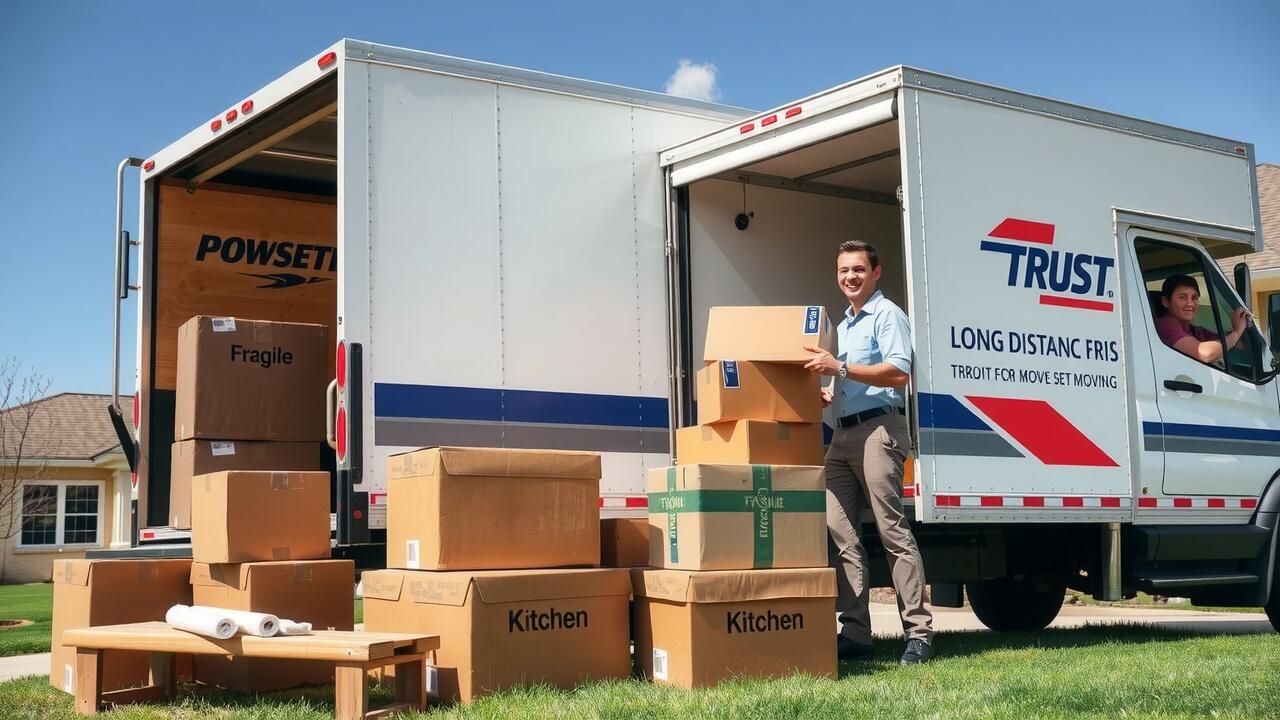
Table Of Contents
Understanding North Carolina's Climate
North Carolina experiences a diverse climate, characterized by distinct seasons. Winters are generally mild in the coastal areas, while the mountains can see significant snowfall. Summers often bring high temperatures and humidity, particularly in the central and eastern regions. Understanding these seasonal variations is crucial for anyone considering long distance moving in North Carolina, United States.
Those relocating should prepare for weather fluctuations throughout the year. Packing appropriately for the season can make a significant difference in the moving experience. Considering the climate can help in planning tasks and managing expectations, ensuring a smoother transition to your new environment. Plan for potential weather-related challenges, especially during peak moving seasons in spring and summer.
Tips for Adapting Your Move to Seasonal Changes
North Carolina experiences distinct seasons that can impact your moving plans. Summer can bring high humidity and temperatures, making it crucial to stay hydrated and schedule your packing and loading during cooler parts of the day. Fall offers mild weather, perfect for a move, but also introduces the potential for hurricanes. Keep an eye on forecasts and prepare for sudden weather changes that could affect travel.
Winter months can bring chilly temperatures and occasional snowfall, which may complicate your relocation. Ensure your moving truck is winter-ready and consider how cold weather might affect your belongings. Spring signifies an increase in rainfall, so planning for waterproof packing materials can prevent damage. Adapting your strategies based on seasonal changes will ease the stress of Long Distance Moving in North Carolina, United States.
Navigating North Carolina's Roads
Navigating North Carolina’s roads can be a unique experience due to the state’s diverse landscapes and varying traffic conditions. From the coastal plains to the foothills of the Appalachian Mountains, choosing the right route for your long distance move requires careful planning. Familiarize yourself with major highways such as I-40 and I-85, which can provide efficient pathways across the state. Checking real-time traffic updates can aid in avoiding congested areas, especially during peak travel times.
When preparing for long distance moving in North Carolina, United States, consider the road conditions that may vary throughout the year. Rain and storms can affect driving, particularly in the spring and summer months. It is advisable to plan your route ahead of time and be aware of any construction projects or road closures that may impact your journey. Having an alternate route in mind can help ensure a smoother travel experience.
Best Routes for Long-Distance Relocation
When planning long-distance moving in North Carolina, United States, it's essential to consider the most efficient routes that will facilitate your journey. Interstate 95 and Interstate 85 are two major highways that connect various regions of the state and offer straightforward access to many urban centers. Additionally, these interstate routes are well-maintained and provide ample rest stops and amenities, making them ideal for relocation travel.
Understanding local road conditions is equally important for a smooth move. North Carolina's scenic byways, while beautiful, may experience winding paths and slower speeds. Staying informed about construction projects or seasonal road closures can help you avoid potential delays. Utilizing GPS technology or mapping applications can also provide real-time updates about traffic conditions, ensuring a more efficient travel experience during your long-distance move.
Settling into Your New Home
Settling into your new home in North Carolina can be an exciting yet overwhelming experience. Unpacking and organizing your belongings can help make the space feel familiar. It’s important to prioritize the essentials and create a comfortable environment as quickly as possible. Take time to set up your kitchen and living areas first. These spaces often serve as the heart of your new home.
Getting to know your neighborhood will also aid in your transition. Explore local parks, grocery stores, and restaurants to familiarize yourself with the community. Engage with neighbors to learn about the area and resources available. As you integrate into your new surroundings, remember that easing the transition can make long distance moving in North Carolina, United States much more manageable.
Tips for a Smooth Transition to North Carolina
Adjusting to a new home in North Carolina can be an exciting yet challenging experience. To ensure a smooth transition, it's important to immerse yourself in the local culture and community. Joining neighborhood groups on social media or attending local events can help you meet new people and learn more about your area. Familiarizing yourself with local customs and traditions will also enrich your experience and help you feel more connected.
When planning for Long Distance Moving in North Carolina, United States, organizing your belongings is crucial. Labeling boxes according to rooms in your new home simplifies unpacking. Consider creating an inventory list to keep track of your items. Setting up essential services before you arrive can ease the adjustment as well. Having utilities, internet, and other services ready will allow you to settle in comfortably.
FAQS
What should I consider about North Carolina's climate when planning my move?
North Carolina experiences a humid subtropical climate with hot summers and mild winters. It's important to check seasonal weather patterns and plan your move accordingly, ensuring you have the right supplies and clothing.
How can I adapt my moving plans to seasonal changes in North Carolina?
Depending on the season, consider factors such as road conditions, temperature fluctuations, and potential weather events like hurricanes or snow. Scheduling your move during milder months and preparing for weather-related challenges can help ensure a smoother transition.
What are the best routes for long-distance relocation to North Carolina?
Major highways such as I-40, I-85, and I-95 are primary routes for long-distance moves to North Carolina. Familiarizing yourself with traffic patterns and exploring alternative routes can help avoid congestion and enhance your moving experience.
What tips can help me settle into my new home in North Carolina?
To ease your transition, take time to explore your new neighborhood, connect with local resources, and get involved in community activities. Additionally, setting up utilities and finding nearby services can help you feel at home more quickly.
Are there any specific challenges I should be aware of when moving to North Carolina?
Yes, some challenges include adjusting to the humidity, understanding local regulations or zoning laws, and navigating the diverse terrain. Being informed about these factors can help you prepare better for your move.
